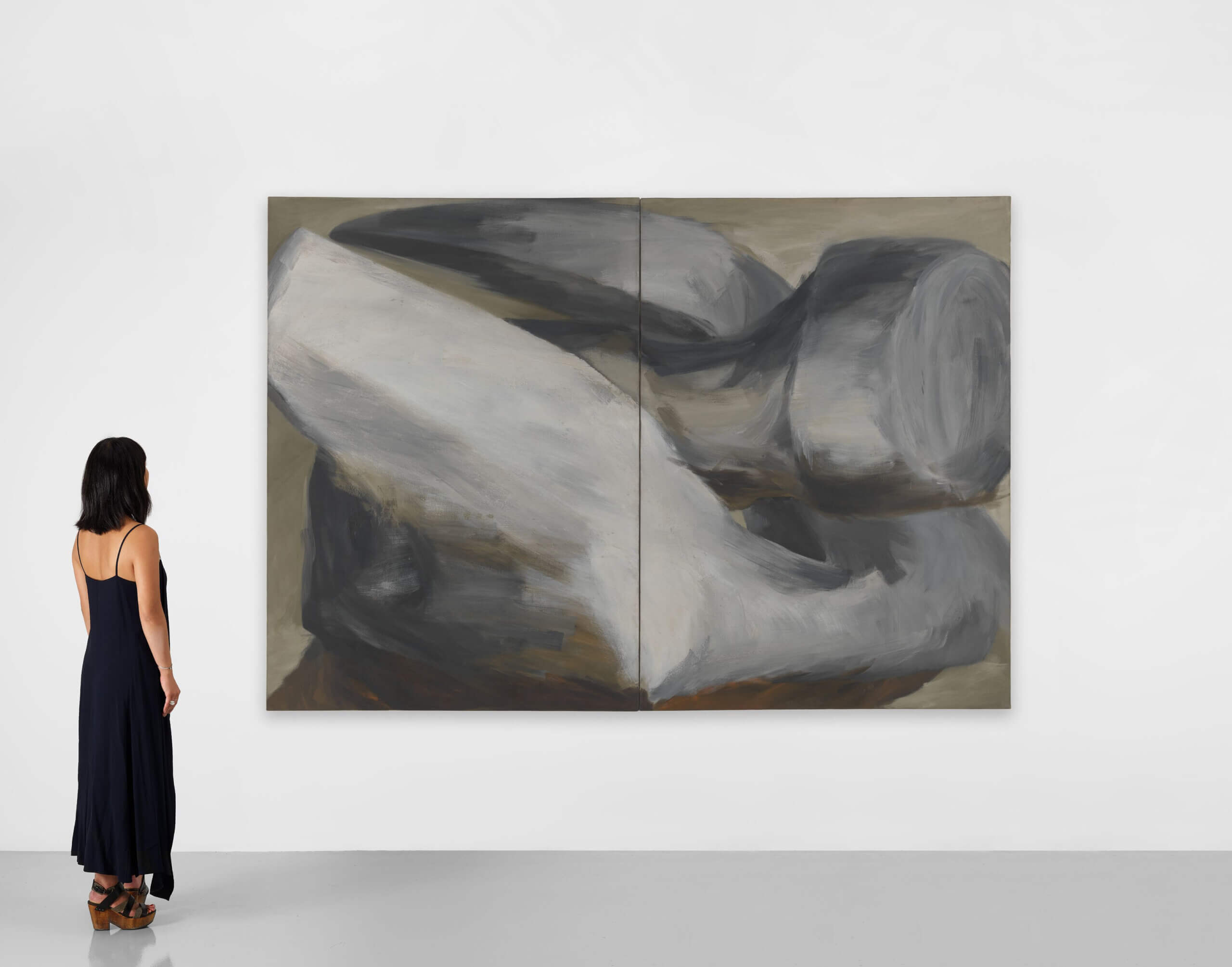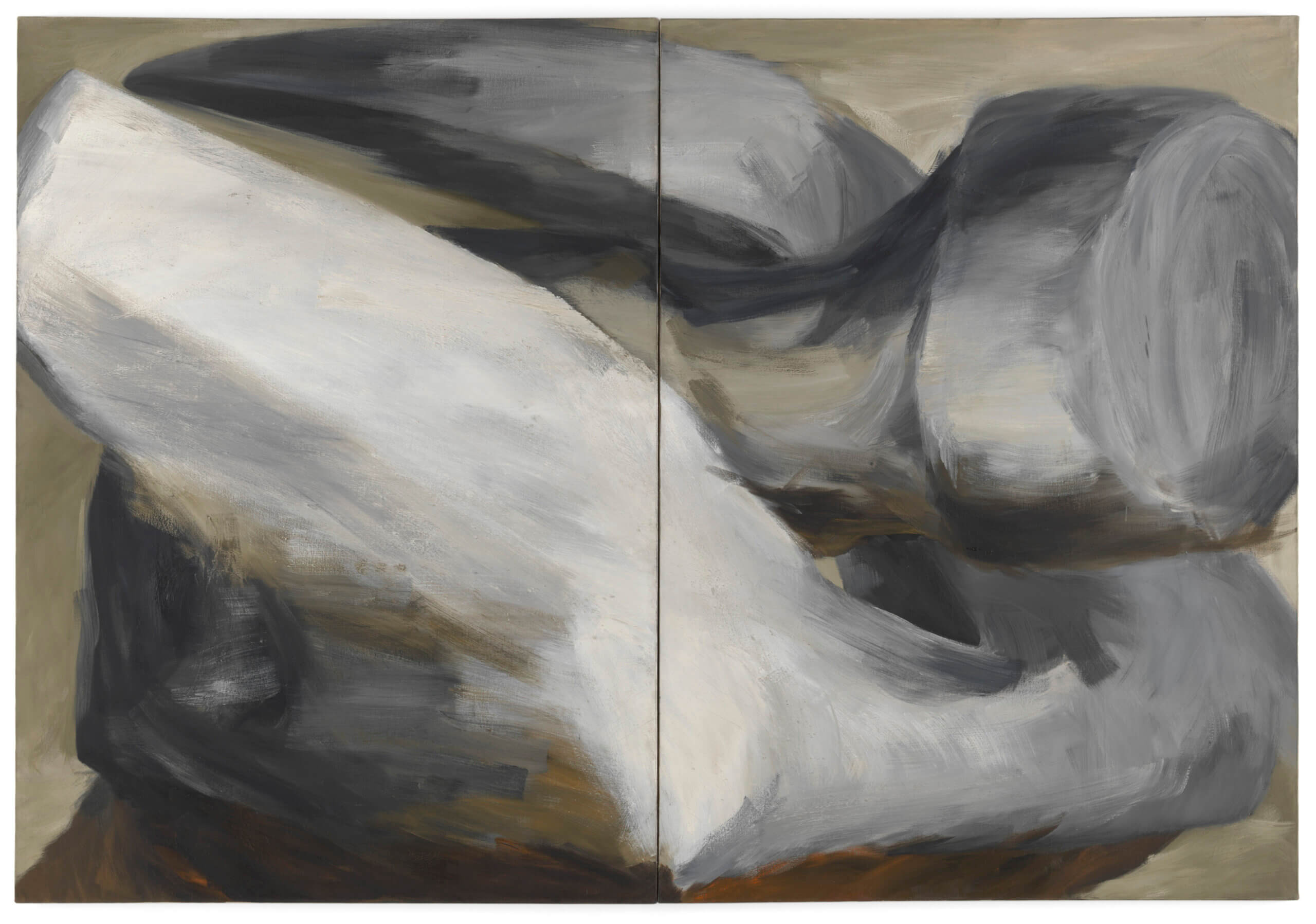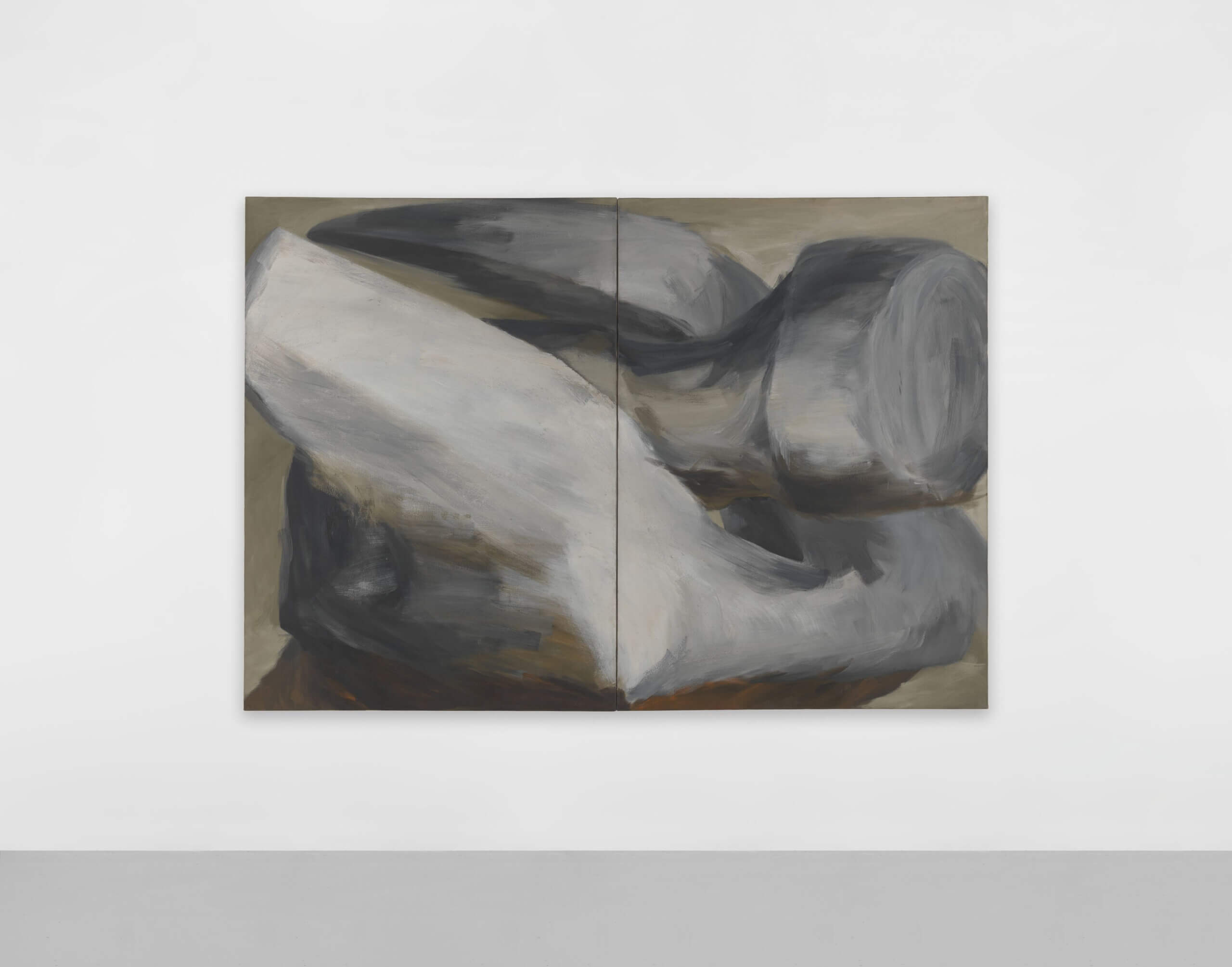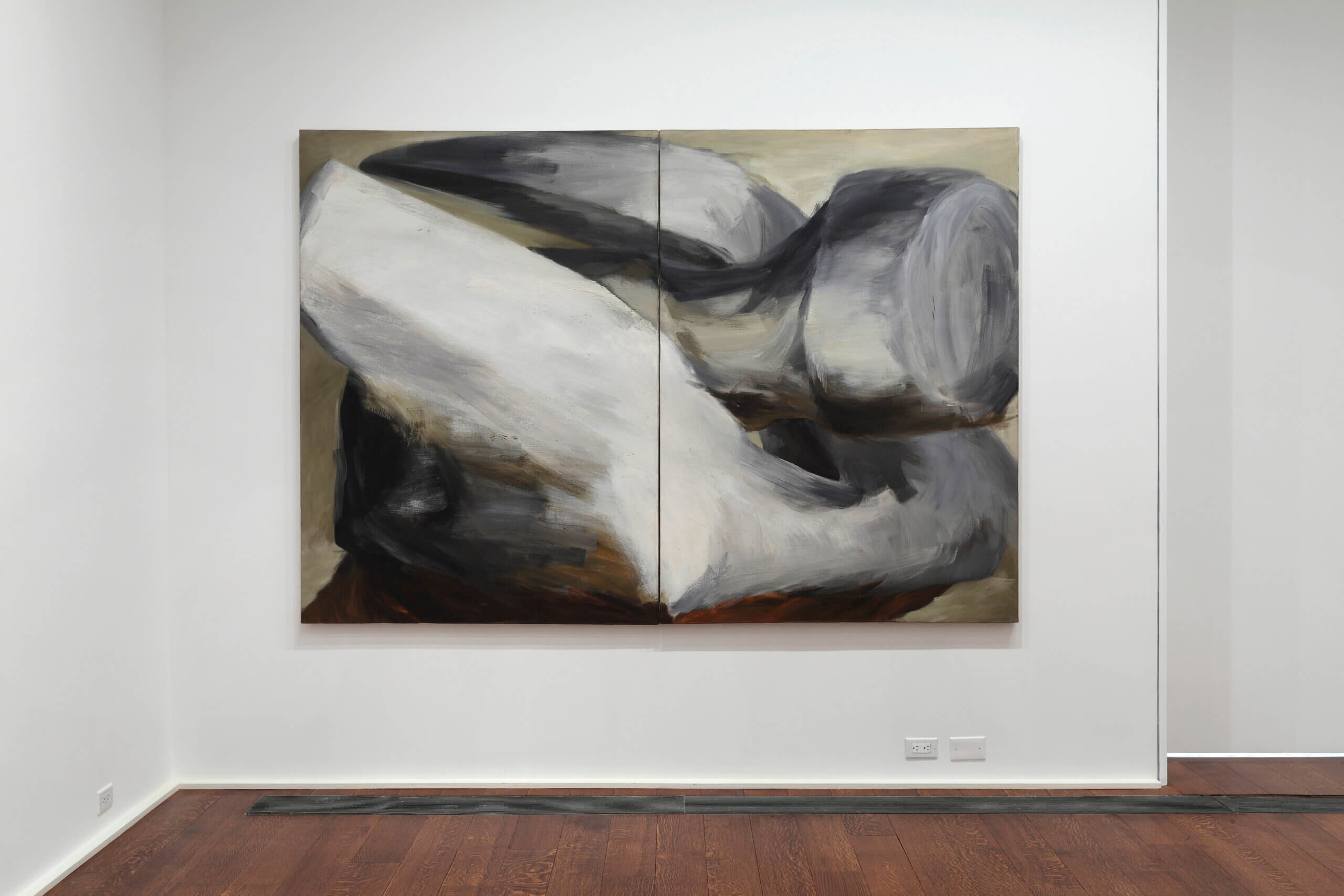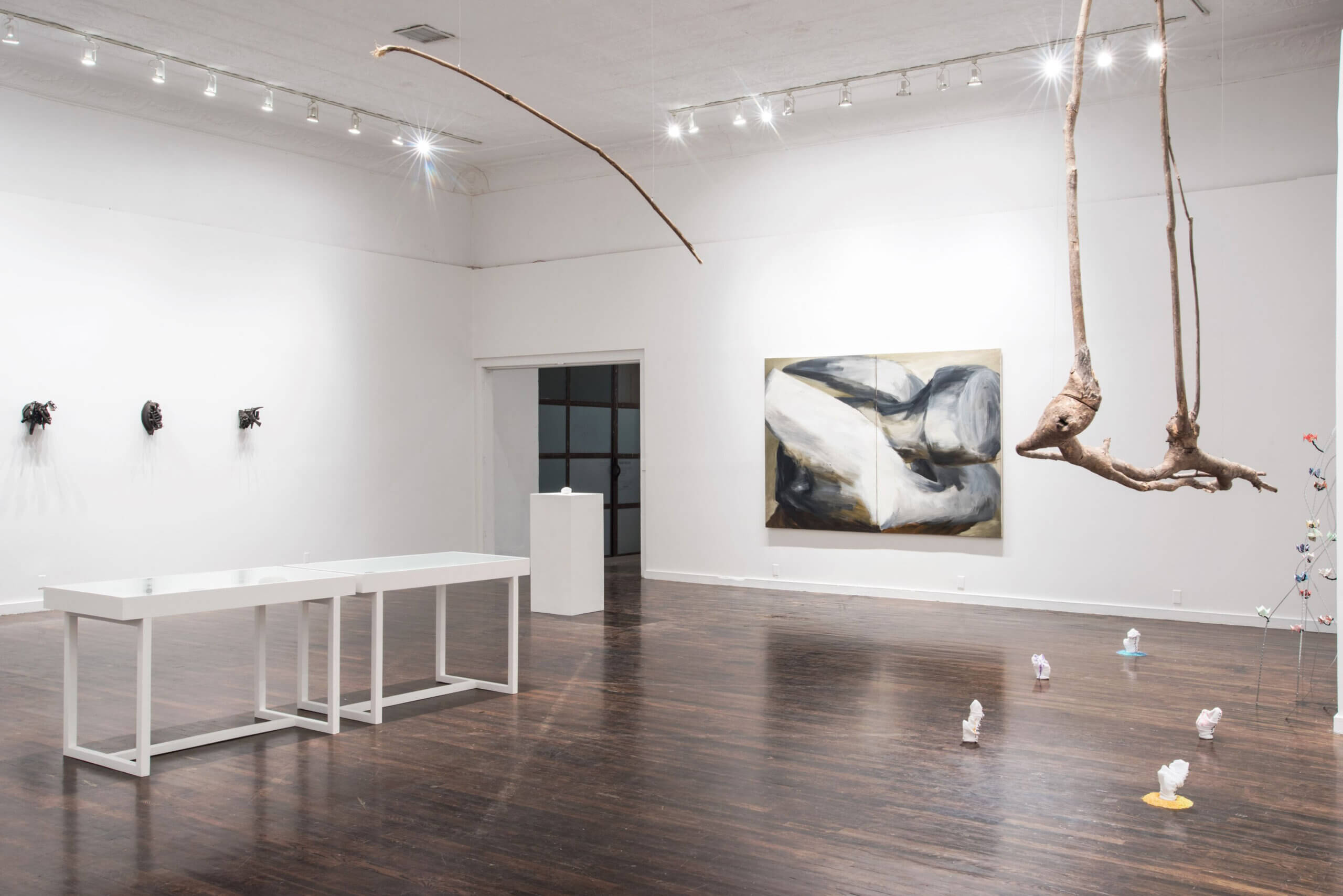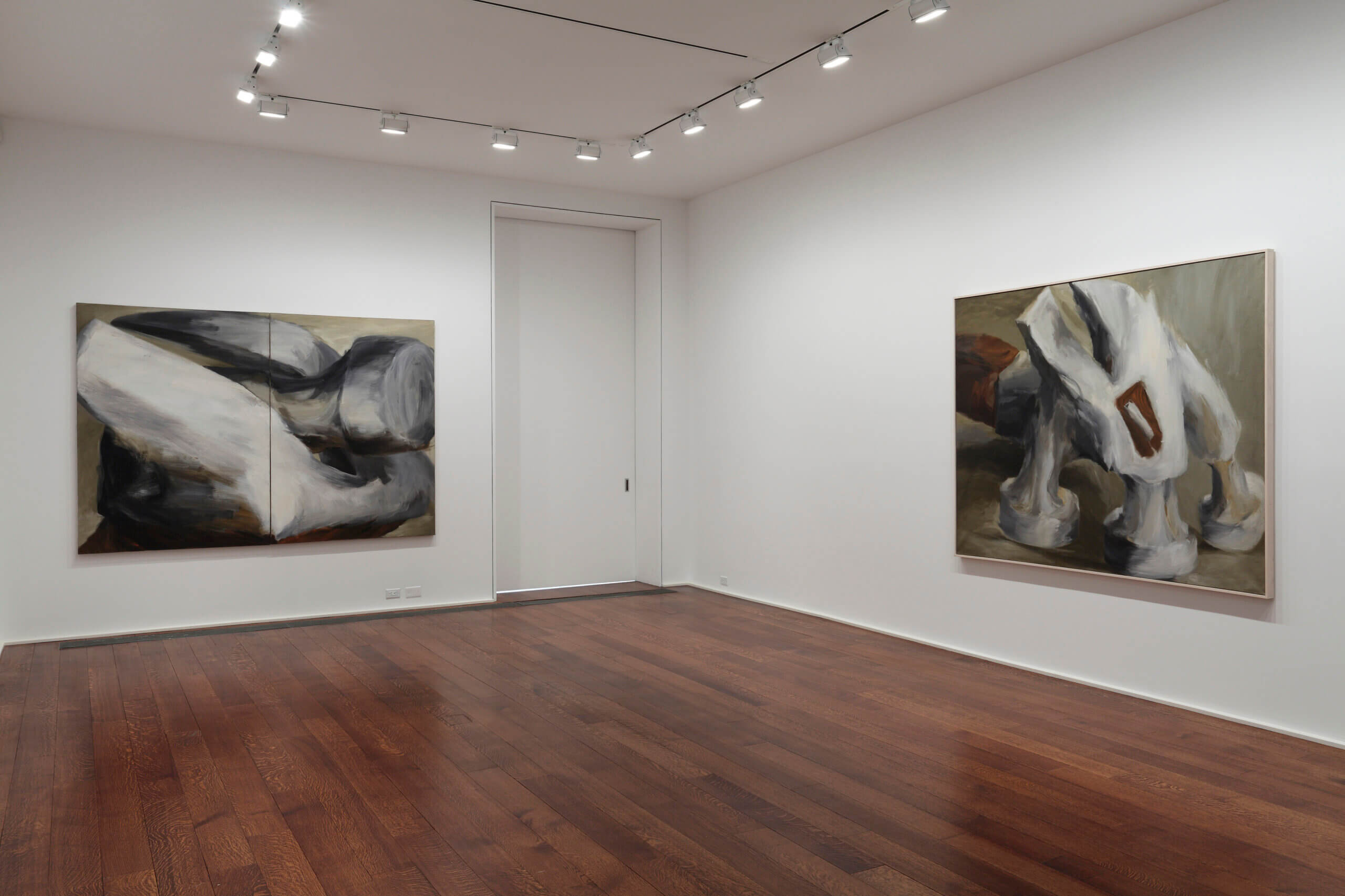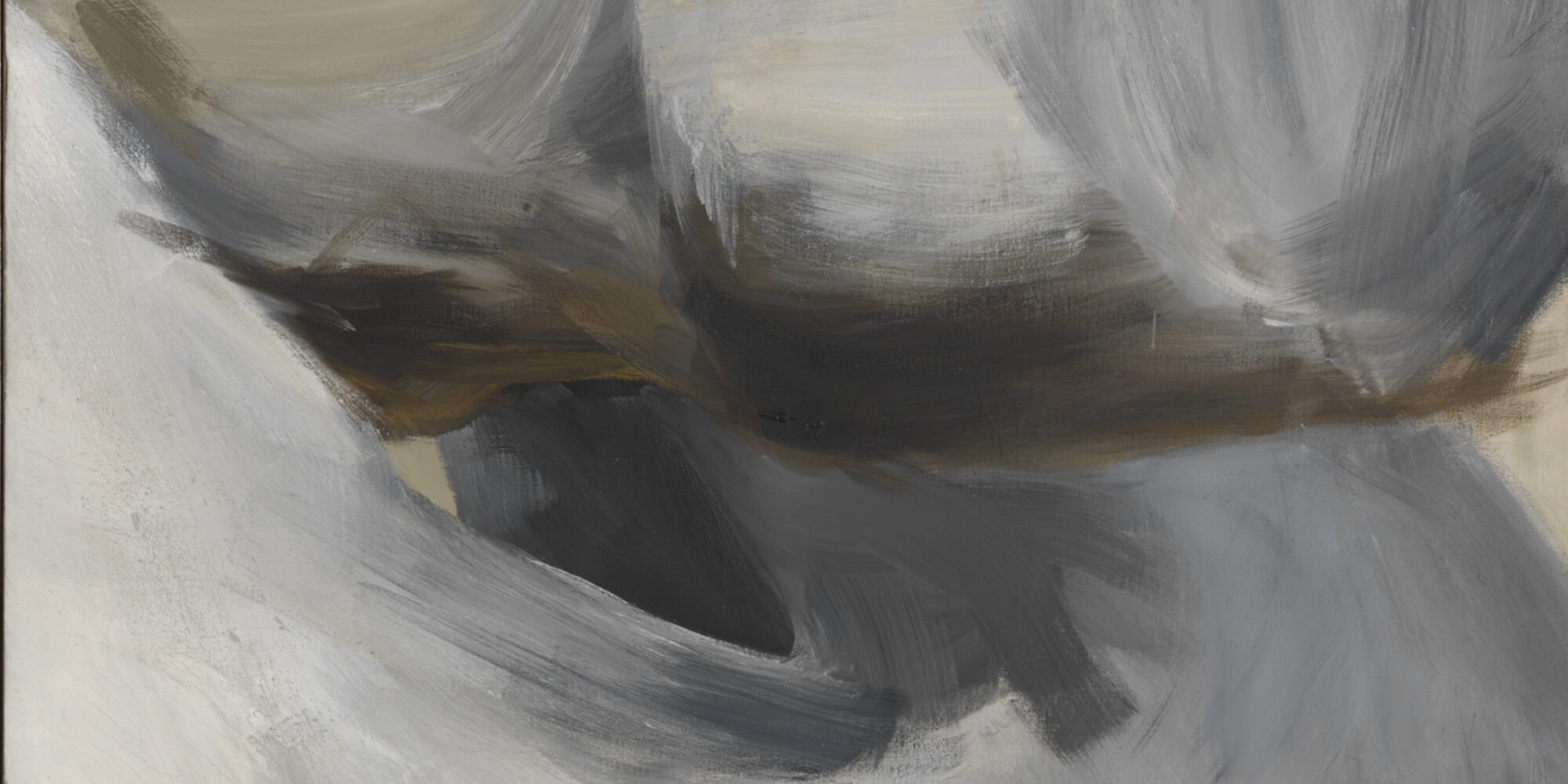
Lee Lozano
No title
No title
c. 1963-1964 Oil on canvas, two parts 175.3 x 254 cm / 69 x 100 in
The diptych 'No Title' (1963-1964) belongs to the renowned body of tool paintings and drawings that Lozano produced in the early 1960s. The artist moved away from her multicolored, surreal 'comix', which demonstrated her acerbic, nonconformist wit through punning captions, in 1963, and began to depict screwdrivers, bolts, wrenches, clamps and hammers: objects intimately associated with male power and productivity. 'No Title' certainly elevates hardware as subject matter as it explores the topic in lustrous oils on a grand, painterly scale; for Lozano the tool served as grounds for formal and symbolic exploration alike.
‘In Lozano’s tool drawings, objects mate and morph, multiply and engage.’—Jo Applin
Lozano endowed her hardware with an anthropomorphic valence, sexualizing its implicit motion. Helen Molesworth characterized the subject of the tool paintings as 'the human form morphing with and becoming a variety of mechanical and inanimate objects...a whacked-out erotic porosity.' 'No Title' simultaneously depicts a hammer — among the most basic implements for manual labor — and the suggestive merging of abstract forms. The work engages with the violence of sexual desires and the erotic tension that springs from the union of the mechanical and the organic.
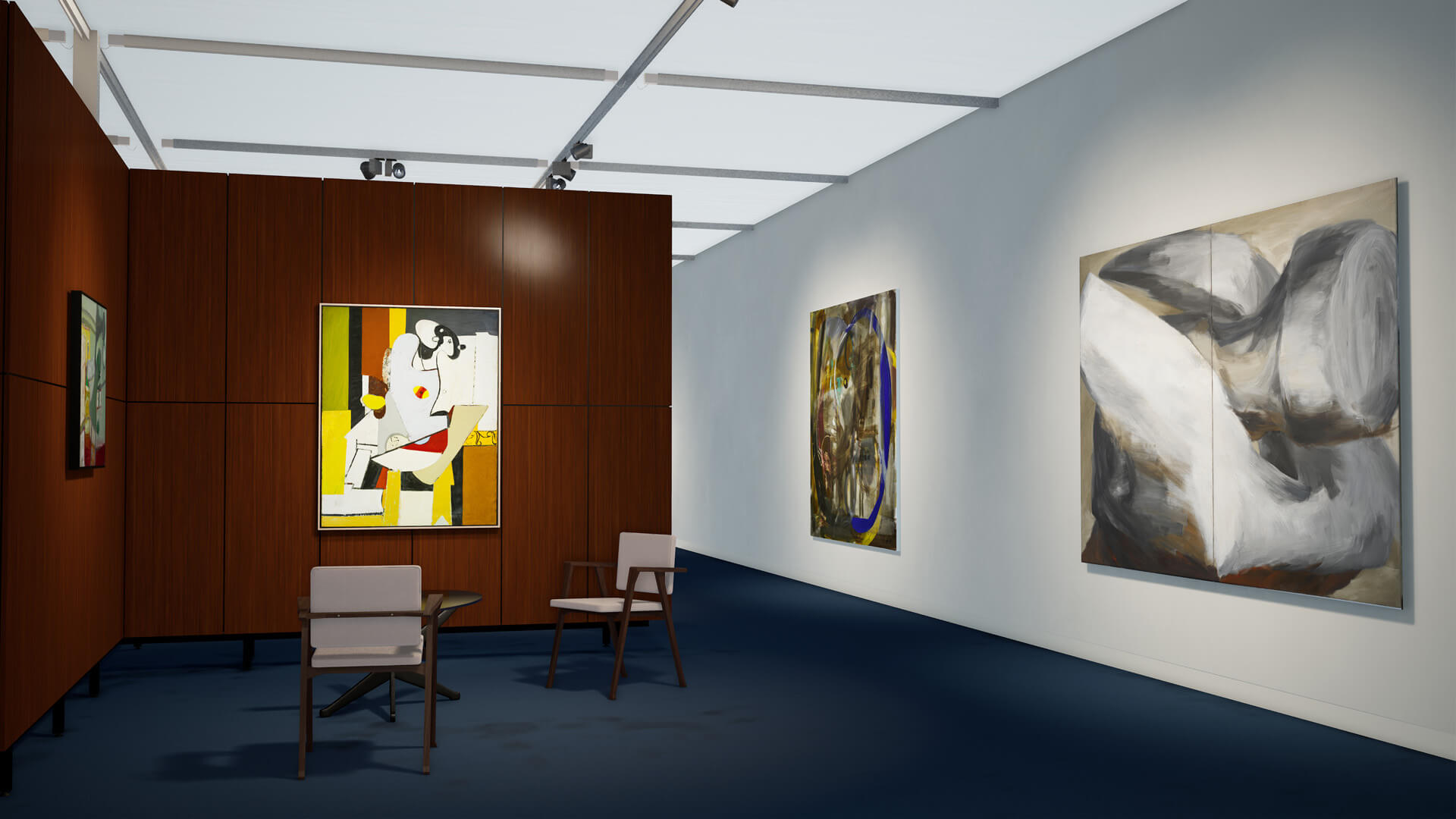
Lozano's oeuvre is colored by the pleasure that she took in language. While this work is untitled, there is the felt implication — delivered with a wink — that a 'tool' is at once an apparatus used to build the world, slang for the male sex organ and a dupe whose simplicity seems to invite mockery and manipulation. At a moment when gender roles were being radically redefined through a feminist yet arguably reductive rhetoric of sisterhood, Lozano forged her own language of mechanical proxies to flesh out the nuances of her role as a woman and an artist.

Lee Lozano
Lee Lozano’s art, produced over the course of little more than a decade, is striking for its breadth and energy, and admired for its daring physicality and tirelessness in investigating the body and issues of gender. Standing apart from the detached and rarefied conceptual art in her time, Lozano merged art and life and images and ideas in works characterised by a unique use of paint, language and action.
